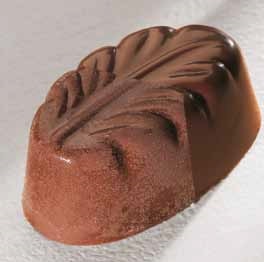What is fat/sugar bloom?
 Fat bloom
Fat bloom
This problem is caused by a thin layer of fat crystals on the surface of the chocolate. The chocolate loses its gloss and a soft white layer appears. This layer gives the chocolate an unpleasant appearance. This problem should not be mistaken for the formation of mold. The cause of fat bloom is the re-crystallization of fat and/or the migration of fatty fillings into the layer of chocolate. Storage at constant temperature delays the appearance of fat bloom.
 Sugar bloom
Sugar bloom
By comparison with fat bloom, sugar bloom consists of a rough and irregular layer on the surface of the chocolate. Sugar bloom is caused by condensation, e.g. when chocolate is taken out of the refrigerator and moisture forms upon it. The water from this condensation dissolves the sugar in the chocolate. Then when the water evaporates, the sugar remains on the surface of the chocolate in the form of large, irregular crystals. This gives the chocolate an unpleasant appearance. Sugar bloom can be prevented, if temperature variations when moving the chocolate from a cold place into a warm place are avoided (thus preventing condensation). Chocolate products leaving a cold room should be stored in a warmer room for a certain period of time before opening the packaging. In this way, direct condensation can be avoided. It is therefor of major importance that chocolate products are stored under ideal conditions so that they remain in their original condition for as long as possible, without developing any defects or decay.
(By courtesy of Callebaut.)



